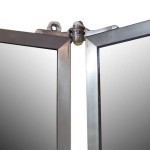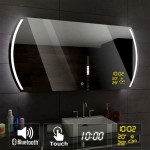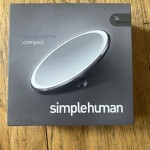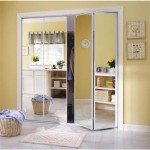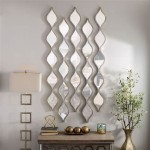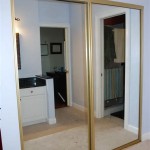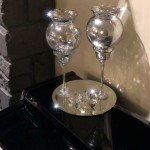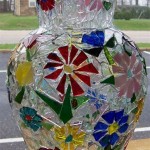Mirrors for Kids: Reflections and Learning
Mirrors offer a fascinating world of discovery for children. From a very young age, babies are captivated by their reflections, marking the beginning of a lifelong relationship with these reflective surfaces. Understanding how mirrors work and the various types available can enhance a child's learning and development.
Mirrors work based on the principle of reflection. Light travels in straight lines called rays. When these rays strike a smooth surface like a mirror, they bounce back at the same angle. This phenomenon, known as specular reflection, creates an image of whatever is in front of the mirror.
The image seen in a mirror is a virtual image. This means the light rays don't actually converge at the image location; they only appear to. The image appears to be behind the mirror, at the same distance as the object is in front of it. This is why a mirror image appears reversed left to right.
Several different types of mirrors exist, each with unique properties and applications. Plane mirrors, the most common type found in homes, have a flat reflective surface. They produce images of the same size and shape as the object reflected.
Concave mirrors curve inward, like the inside of a bowl. These mirrors can produce magnified images when the object is close to the mirror, useful for tasks like applying makeup or shaving. However, when the object is further away, the image appears smaller and inverted.
Convex mirrors, on the other hand, curve outwards. They provide a wider field of view than a plane mirror of the same size. The images produced by convex mirrors are always smaller than the actual object and appear right-side up. This makes them suitable for security mirrors in shops and rearview mirrors in cars.
Beyond their everyday uses, mirrors offer significant educational value for children. They facilitate the development of self-awareness, a critical milestone in early childhood. Babies and toddlers learn to recognize themselves in the mirror, understanding that the reflection is a representation of themselves.
Mirrors can also be used to explore concepts related to light and reflection. Simple experiments, such as shining a flashlight at a mirror in a darkened room, can demonstrate how light travels and bounces off surfaces. This provides a practical introduction to physics principles in an engaging way.
Playing with mirrors can enhance spatial reasoning skills. Children can experiment with positioning objects in front of mirrors and observing how the reflections change. This helps them understand spatial relationships and develop problem-solving abilities.
Mirrors can also be incorporated into creative activities. Creating kaleidoscope patterns using multiple mirrors or drawing self-portraits using a mirror as a guide can encourage artistic expression and enhance observational skills.
Safety considerations are important when using mirrors with children. Mirrors, especially glass ones, can break and pose a hazard. Choosing age-appropriate mirrors made from safe materials like acrylic is recommended for younger children. Ensuring mirrors are securely mounted and supervising children during activities involving mirrors can prevent accidents.
Introducing mirrors to a child's environment can provide a wealth of learning opportunities. From understanding basic physics principles to developing self-awareness and creative skills, mirrors can be valuable tools for exploration and discovery.
The reflective properties of mirrors can be used to teach children about symmetry. By placing objects in front of a mirror, they can observe how the reflection creates a symmetrical image. This can be further explored by using foldable paper cutouts to create symmetrical designs.
Using mirrors in conjunction with other toys can create engaging learning experiences. For instance, building blocks can be placed in front of a mirror to demonstrate reflections and explore concepts of doubling and symmetry. This hands-on approach makes learning more interactive and enjoyable.
Mirrors can also be used to introduce children to the concept of perspective. By changing the angle of the mirror or the position of the object, children can observe how the reflection changes. This helps them understand how viewpoint affects what is seen.
Moreover, mirrors can be a valuable tool for developing language skills. Encouraging children to describe what they see in the mirror, including their own reflections and the reflections of objects, helps them expand their vocabulary and communication abilities.
The use of mirrors in pretend play can further enhance a child's development. Mirrors can be incorporated into play scenarios, such as setting up a pretend hair salon or a doctor's office, encouraging imaginative play and social interaction.
From simple observation of reflections to complex scientific concepts, mirrors offer a multifaceted learning experience for children of all ages. Their versatility and accessibility make them valuable tools for promoting cognitive, creative, and social development.

Kids Mirror Functional Shelf And Hooks Timeless Design Nofred

Safe Animal Mirror Toppingskids Adorable Designs For Your Little Ones

Small Kids Mirror Nursery Montessori Decorative Natural Wooden Baby Floor Room Décor

Adairs Kids Rainbow Mirror Wall Art

Bunny Floor Mirror Circu Magical Furniture

Unicorn Kids Handheld Mirror Personalised Gift Room Decor Shatterproof Vanity For Girls

Magical Mirror With Tv 22 Circu Furniture

Two Tone Layered Circle Kids Mirror Pink Pillowfort Target

Costway Kids Full Length Mirror Free Standing 360 Dressing Wooden Princess Storage Pink Com

Mi Mirror Rabbit Shape Kids Floor

